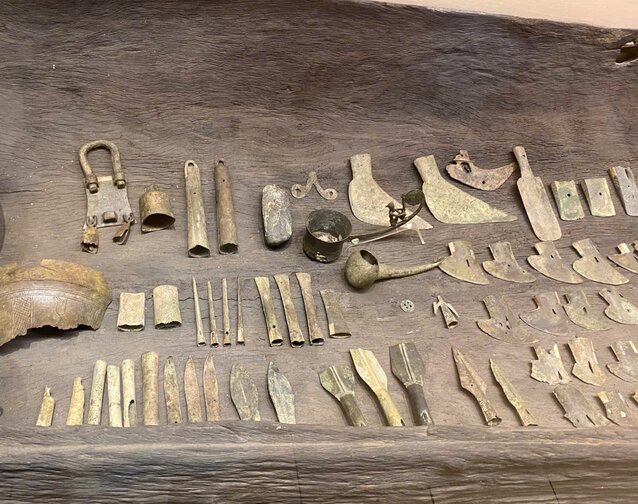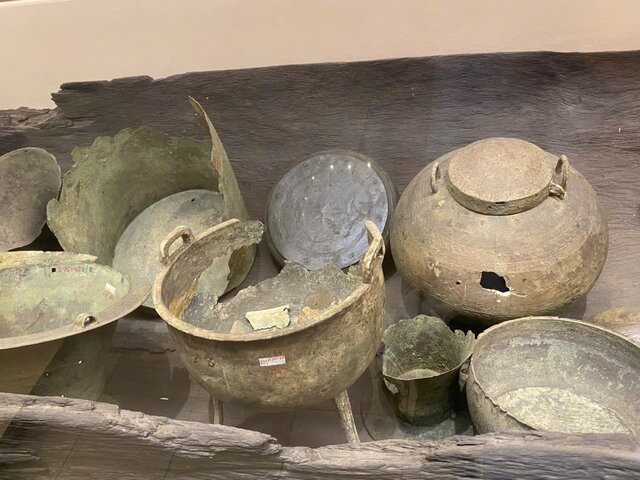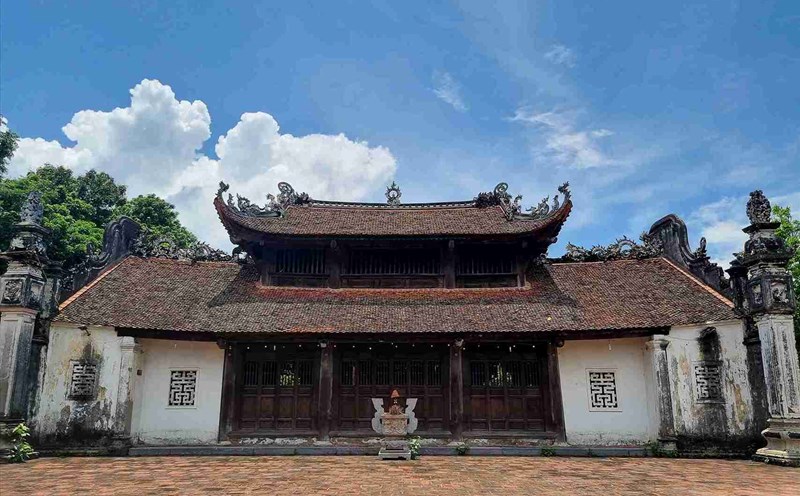Dong Son culture was first discovered in 1924, on the banks of the Ma River in Dong Son Commune, Dong Son District (now Ham Rong Ward, Thanh Hoa), dating back about 2,500 - 2,000 years. Dong Son culture is not only outstanding for its typical agriculture and processing level, but also for its unique concepts of religion, beliefs, customs, life and death, etc.
According to the customs of Dong Son residents, even when people are no longer able to live fighting and work as they are literally, Dong Son people still believe in their own belief that a world on the other side always takes place in parallel, almost similar to the real world.
In tombs during the Dong Son cultural period, they often bury the dead with burial objects related to real life such as axes, plutes, bowls, mules, spears, scales, arrowroofs, etc. In addition to burial objects for practical purposes, a propelleddeck appeared (this type of object is much smaller than the objects commonly used).
A typical example of the burial method and burial practices of Dong Son residents is the Viet Khe Ship Tomb, discovered in 1961, located deep under the soil of Ngoc Khe village, Thuy Nguyen, Hai Phong.
This is the largest ship tomb in its original state, containing many rare burial items of Dong Son culture: bronze items, painted wooden items, painted leather items.
5 ancient tombs have coffins made of hollowed trunks. Of which, the largest tomb No. 2, containing more than 100 artifacts - is identified as Viet Khe Ship Tomb.
This boat tomb is considered "extremely valuable" because it is the largest and most intact of the Dong Son boat tombs discovered in Vietnam. Although there are no traces of the remains, the burial items in Viet Khe Tomb are still almost intact.
The coffin of Viet Khe's grave was carved from a large ironwood body, up to 4.76m long, 0.77m wide and 0.39m deep. The inside of the coffin is carved evenly and beautifully, the outside is peeled off with no artifacts.
Researchers believe that burying the dead in coffins in the shape of a unique boat - a popular means of transportation on the river, with rowing roofs inside the coffin (rowing swings) reflects the life of the owner of this grave closely attached to the river, with the idea that they hope to continue that life in the world beyond.
The burial belongings on the boat are almost intact with 107 artifacts, including: household items, production tools and weapons. Among them are some quite unique artifacts such as: a gai-shaped swallow handle, a folding to decorate the fanciful fanciful flute blower; some other artifacts such as: a piece of skin with paint, a wooden paddle swallow with red paint, spears with intact tongue and folds;...


In addition, there are some weapons such as bronze sickles with their nose cut off or their nose bent with the concept of being objects for the dead. The bronze sickles are cut and cracked, expressing the belief of "dividing goods" to the dead, so the living want to " cause pain" in those goods to separate them from the world of the positive world - like the custom of breaking clothes in the traditional ceremony of giving up the mother of some ethnic groups in the Central Highlands today.
Some artifacts are bronze weapons showing that there were armed conflicts between clans during this period. musical instruments such as bronze drums, lacins, bronze bells... represent the spiritual and cultural activities of the ancient Vietnamese people that have developed to prosperity, culminating in the art of bronze drum casting.
All of these burial objects have helped us understand more aspects of the social life of Dong Son residents, especially materials related to some traditional Vietnamese handicrafts such as leather making and painting, and also reflect cultural exchanges and transactions such as swords, bells, knives or trays.
According to researchers, the number of buried objects along with the type and value of the objects is a way to show that the owner of Viet Khe Tomb belongs to the noble and wealthy class. That shows that the society of the development of Dong Son culture has entered a period of differentiation, marking the formation of classes. Here, power and assets are no longer divided equally but are concentrated on a number of individuals.
From archaeological documents in general, burial documents during the Dong Son cultural period in particular, it can be seen that social differentiation - the differentiation of assets based on development of production has led to the formation of different social classes, which the development in the later stages of this culture led to the formation of the first state in Vietnamese history, the state of Van Lang - Au Lac.
With great historical, cultural and social significance; Viet Khe boat tomb is recognized as a National Treasure according to Decision No. 2599/QD-TTg dated December 30, 2013.
This is a unique artifact, typical of Dong Son culture, a brilliant indigenous civilization of the ancient Vietnamese people and is also a clear demonstration of the important transformation of Vietnamese society in prehistoric times.
From a chance discovery on the banks of the Ma River in 1924 to large-scale archaeological discoveries such as the Viet Khe boat tomb, Dong Son culture has continuously revealed mysteries about the deep roots of the Vietnamese people.
Currently, the Viet Khe boat tomb and hundreds of valuable burial artifacts are being preserved and displayed at the National Museum of History, No. 1 Trang Tien, Hanoi.





